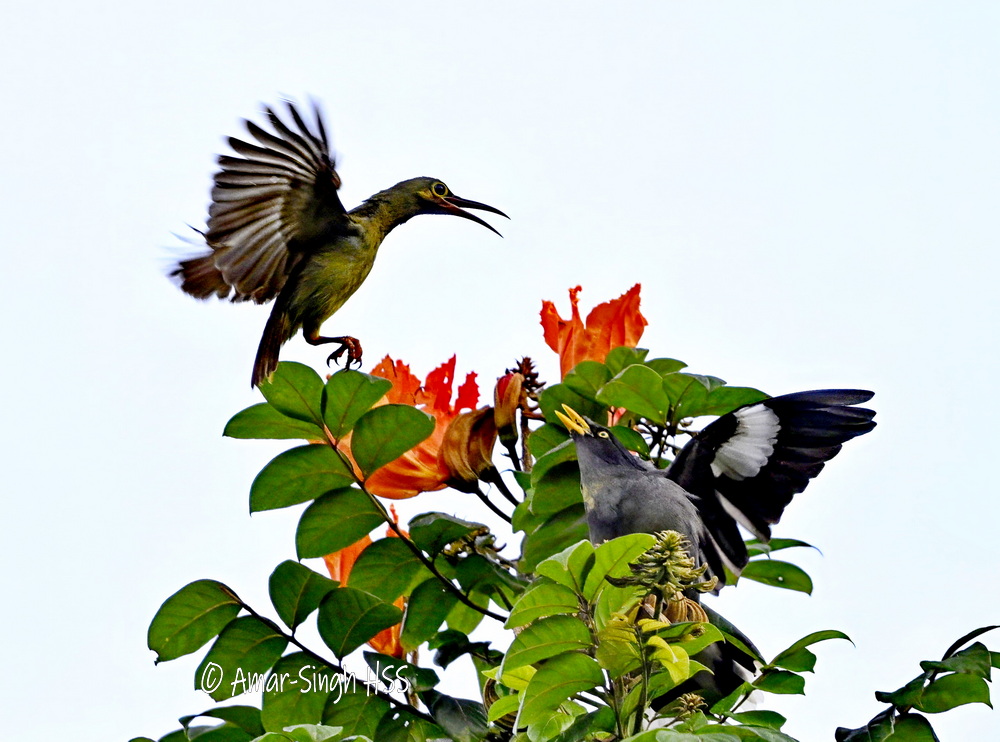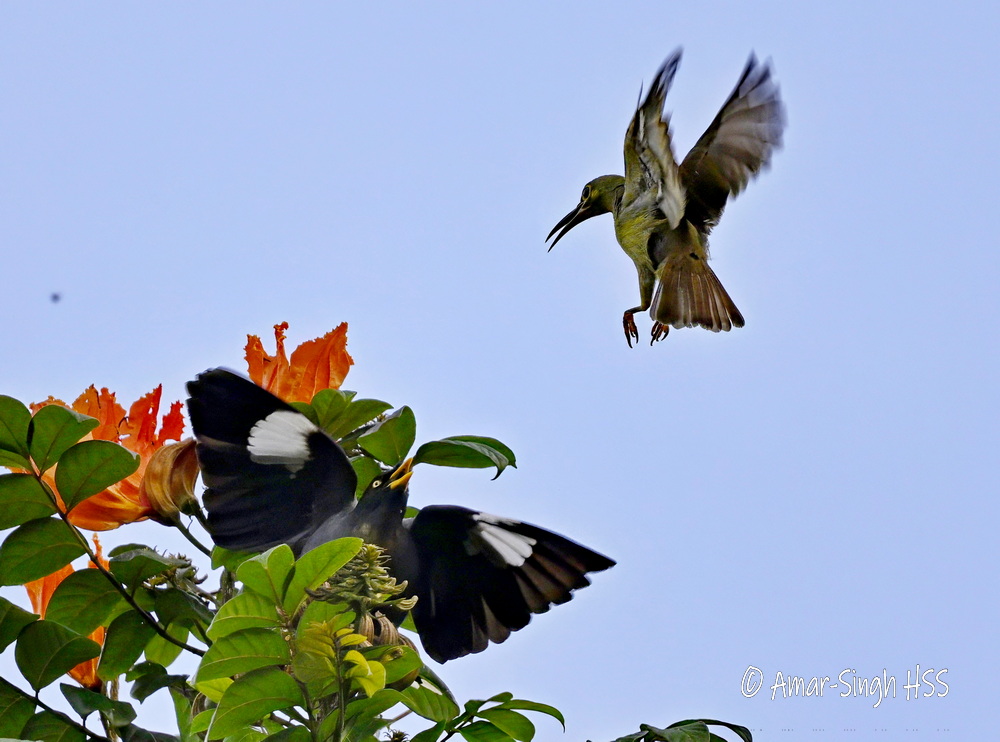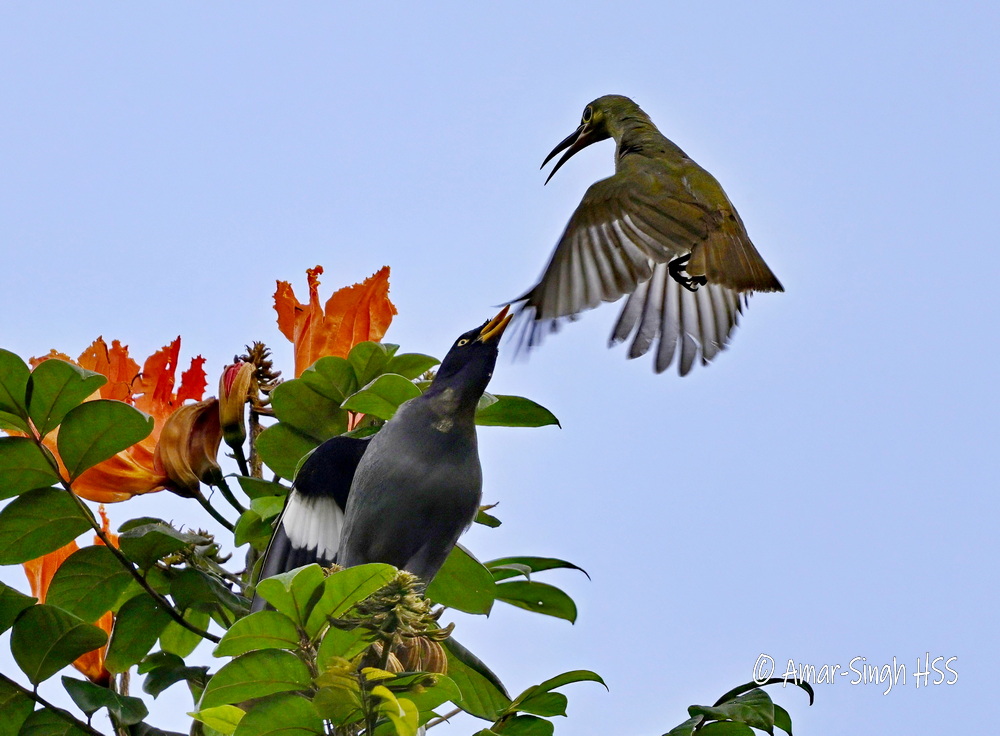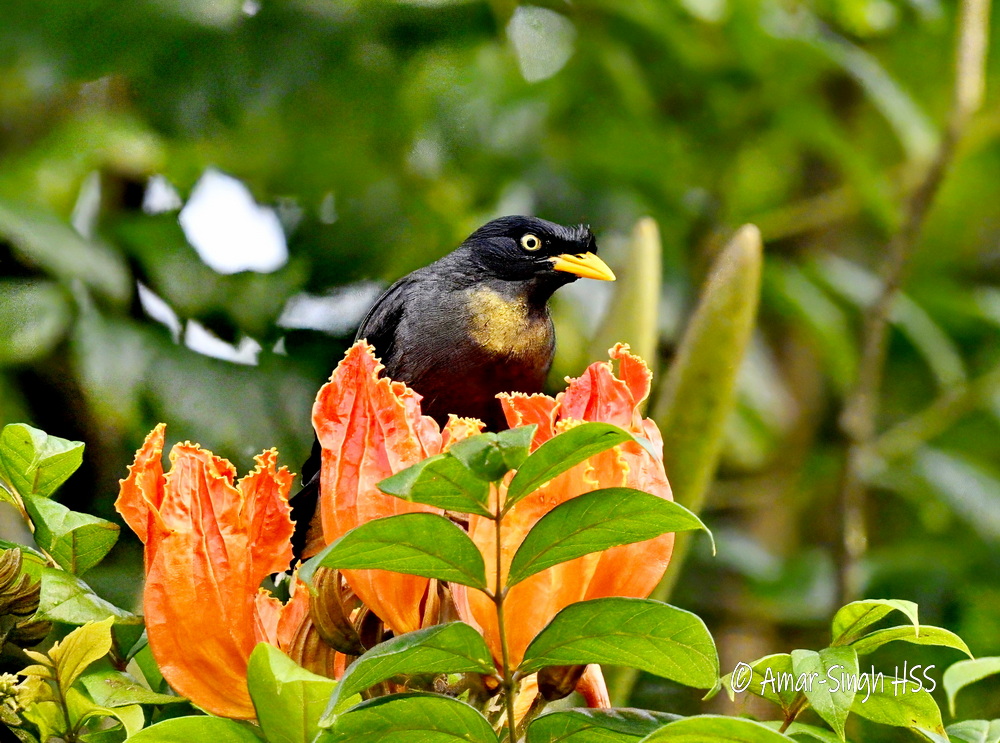Many birds feed on the nectar found in the flowers of the Spathodea campanulata, commonly called the African Tulip Tree (Wee-Yeow Chin & Amar-Singh HSS 2023). If the tree is located close to the forest, then a number of Spiderhunter species will usually turn up (Amar-Singh HSS 2022).
There is often some competitive feeding at these trees. The Spectacled Spiderhunters will often actively chase away other species of Spiderhunters and other birds; often making loud calls.
On 04 January 2024, Perak, Malaysia, we were able to observe a number of birds feeding on Spathodea campanulata nectar. They included Spectacled Spiderhunters Arachnothera flavigaster, Grey-breasted Spiderhunters Arachnothera modesta, Yellow-eared Spiderhunters Arachnothera chrysogenys, Yellow-vented Bulbuls Pycnonotus goiavier and Javan Mynas Acridotheres javanicus.
As observed in the past, the Spectacled Spiderhunters were very aggressive in chasing away other Spiderhunter species. To our surprise one Spectacled Spiderhunter attempted to harass a Javan Myna. It fluttered just above the feeding Javan Myna and repeatedly approached close to ‘threaten it’ (image 1).

The Javan Myna assumed a defensive position but did not move from the flower, unlike other birds; it displayed the wings a number of times (image 2) and, on one occasion, lunged out at the Spiderhunter (image 3).


After a number of attempts, the Spectacled Spiderhunter aborted the attempt and the Javan Myna continued feeding at a number of flowers. Note the breast of the Myna that is heavily stained with pollen from feeding (image 4). Unlike the Spiderhunters, the Mynas have to dip much of the body into the flower cup to get to the nectar; they will then tilt the head back to drink.

References
- Wee-Yeow Chin & Amar-Singh HSS. (2023). Bird Tree Series: Birds Relationships to the African Tulip Tree Spathodea campanulata. Malaysian Bird Report. Volume 2/2023, September 2023: pg. 63-66. Link: https://malaysianbird.report/
- Amar-Singh HSS. (2022). African Tulip Tree and Spiderhunters. Bird Ecology Study Group.
Amar & Chua
(Dato’ Dr Amar-Singh HSS & Chong-Hock Chua)
Perak, Malaysia









